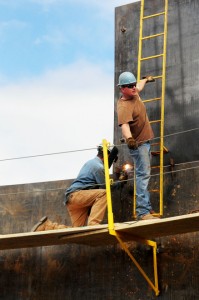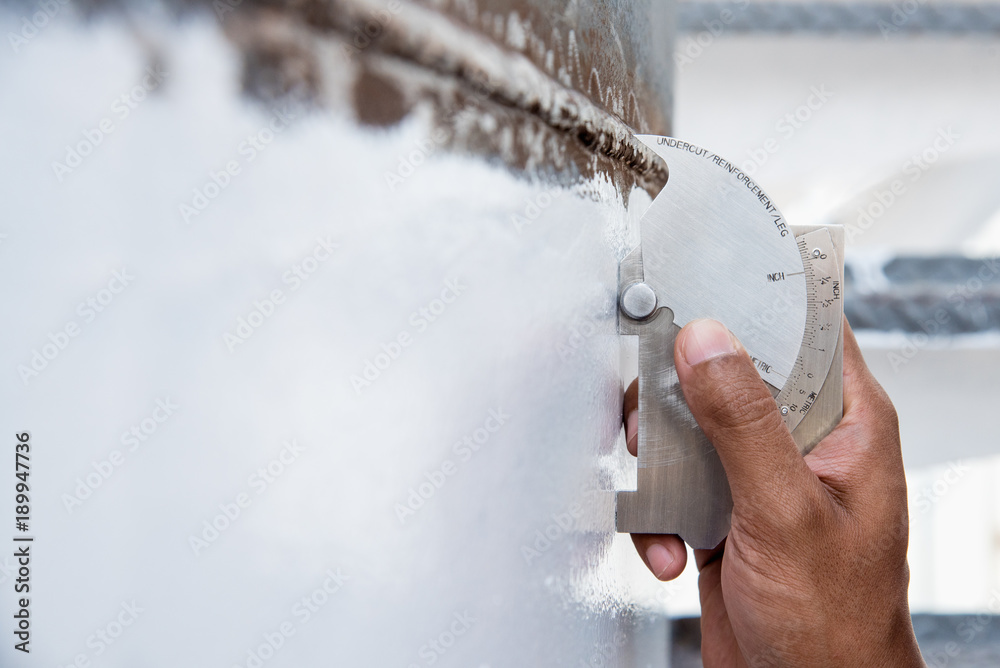Comprehensive Guide to Tank Welding Inspection for Safety And Security and Quality
A Comprehensive Introduction of Tank Welding Assessment Specifications and Methodologies for Improved Weld Quality and Performance
The relevance of welding inspection standards in the production of tanks can not be overemphasized, as they serve as the backbone for making sure weld honesty and functional reliability. Numerous evaluation methods, consisting of visual evaluations and progressed non-destructive screening methods, are essential in determining prospective imperfections that could compromise performance. Additionally, sticking to regulative requirements not just improves weld top quality but also minimizes the risk of costly failings. As we explore the nuances of these approaches, it becomes vital to take into consideration just how a systematic technique can revolutionize current practices and bring about substantial improvements in outcomes.
Relevance of Welding Evaluation Standards

Welding examination standards include a range of requirements, including product requirements, welding treatments, and credentials of personnel involved in the welding process. By imposing these requirements, companies can methodically recognize and fix potential problems, consequently minimizing the likelihood of expensive fixings or catastrophic failures. Strenuous assessment methods promote a society of responsibility and precision, urging welders to maintain high degrees of craftsmanship.

Usual Welding Inspection Strategies


Ultrasonic Checking (UT) is an additional widespread technique, using high-frequency sound waves to find inner flaws that might not show up externally. This method is especially reliable for identifying voids or inclusions within the weld metal. Magnetic Particle Evaluating (MT) is also commonly made use of, especially for ferromagnetic products, as it discloses surface area and near-surface issues through the application of electromagnetic fields and ferrous fragments.
In Addition, Fluid Penetrant Screening (PT) identifies surface-breaking flaws by applying a penetrant to the weld and after that using a developer to attract out the penetrant. Each of these strategies adds to a detailed assessment method, making sure that welds satisfy the stringent quality requirements called for in container construction.
Regulative Standards and Conformity
Regulative standards and conformity are essential parts in making sure the security and reliability of welded structures in tank construction - Tank Welding Inspection. These requirements serve to develop minimum demands for product properties, welding treatments, and assessment practices, therefore minimizing the risk of structural failures and enhancing overall performance
Trick organizations, such as the American Culture of Mechanical Engineers (ASME) and the American Welding Culture (AWS), offer guidelines that are extensively adopted in the sector. Compliance with these requirements not only ensures adherence to ideal techniques yet likewise meets lawful and legal responsibilities, safeguarding the rate of interests of stakeholders.
Regulatory bodies commonly mandate adherence to specific codes, such as ASME Code Area IX for welding credentials and API 650 for welded containers. These codes outline demands for welding strategies, qualifications of workers, and screening methods to verify weld integrity.
Routine audits and examinations are crucial to preserving compliance, as they help recognize inconsistencies from developed criteria. Non-compliance can result in significant fines, task delays, and security dangers. Hence, a robust understanding of regulatory criteria and a dedication to conformity are extremely important in achieving top notch and sturdy bonded tank structures.
Non-Destructive Checking Techniques
Just how can the honesty of bonded frameworks be guaranteed without creating damage? Non-destructive screening (NDT) methods offer a robust solution, anchor enabling inspectors to evaluate weld quality without compromising the material - Tank Welding Inspection. Among one of the most usual NDT strategies are ultrasonic screening (UT), radiographic screening (RT), magnetic fragment screening (MT), and color penetrant testing (PT)
Ultrasonic testing employs high-frequency acoustic waves to helpful hints spot internal flaws and characterize product properties. It offers specific dimensions and is particularly efficient for thick products. Radiographic testing involves passing X-rays or gamma rays through the weld, developing pictures that expose structural defects such as cracks or gaps. This technique is indispensable for evaluating the honesty of intricate welds.
Magnetic fragment testing is suited for ferromagnetic materials, where electromagnetic fields expose surface and near-surface discontinuities. Color penetrant testing makes use of a liquid color to highlight surface-breaking defects, making it an effective technique for non-porous materials.
Each of these NDT methods has distinct benefits, enabling thorough assessments tailored to details products and welding procedures. By carrying out these strategies, markets can ensure the integrity and security of bonded structures, inevitably improving total performance.
Enhancing Weld Quality Via Inspection
Efficient inspection plays a vital role in improving weld quality, serving as a crucial checkpoint in the construction procedure. By identifying potential flaws early, examinations alleviate the danger of compromised structural integrity and make sure conformity with sector standards. Utilizing a mix of aesthetic exams, non-destructive screening (NDT) methods, and mechanical assessments, examiners can discover issues such as porosity, splits, and insufficient combination.
Carrying out a robust assessment method not just boosts the general quality of welds but also fosters a culture of accountability among welders and makers. Normal training and qualification of inspection employees guarantee that they are furnished with the needed skills to identify and resolve possible troubles successfully. This positive strategy minimizes rework and connected expenses, inevitably adding to project effectiveness.
Furthermore, thorough documents of assessment searchings for offers useful understandings into reoccuring concerns, facilitating continual enhancement in welding practices. By leveraging advanced modern technologies, such as automated ultrasonic screening or digital radiography, weld top quality can be boosted with more specific assessments. To conclude, a rigorous evaluation process is crucial in accomplishing premium welds, ensuring safety and security, reliability, and longevity in tank fabrication.
Verdict
In final thought, the implementation of extensive storage tank welding evaluation standards and methodologies is essential for making certain weld integrity and efficiency. By making use of a combination of aesthetic assessments, non-destructive screening approaches, and adherence to regulatory standards, organizations can efficiently recognize see this website and mitigate prospective issues. Promoting a society of responsibility amongst welders further improves the top quality of welding procedures. Ultimately, these practices add to minimized structural failings, lower repair service prices, and improved functional performance within the industry.